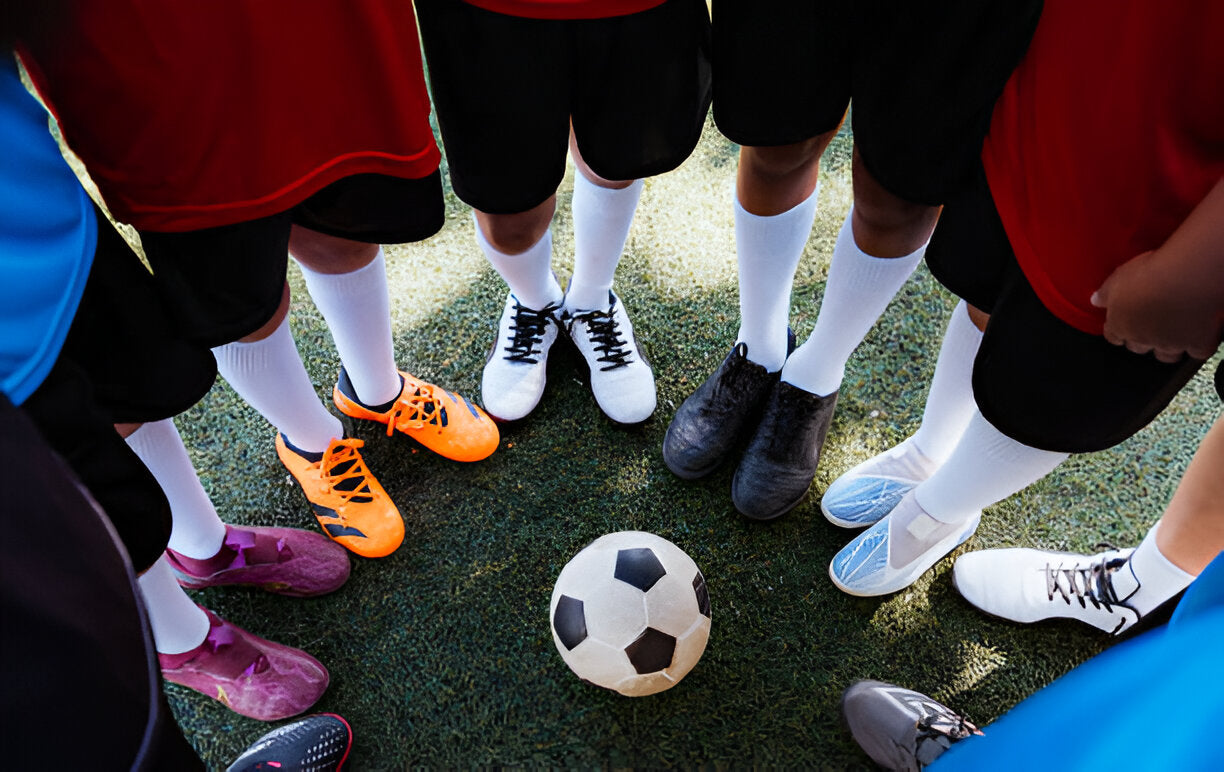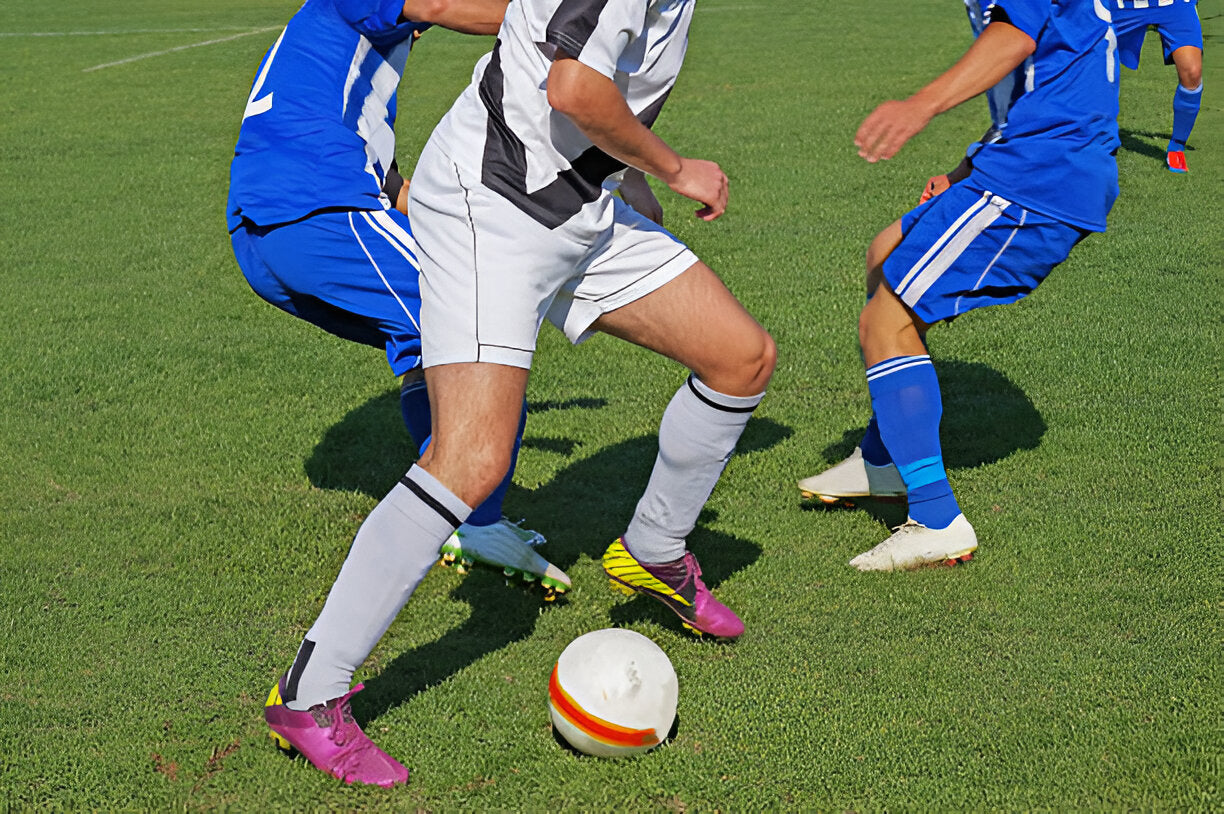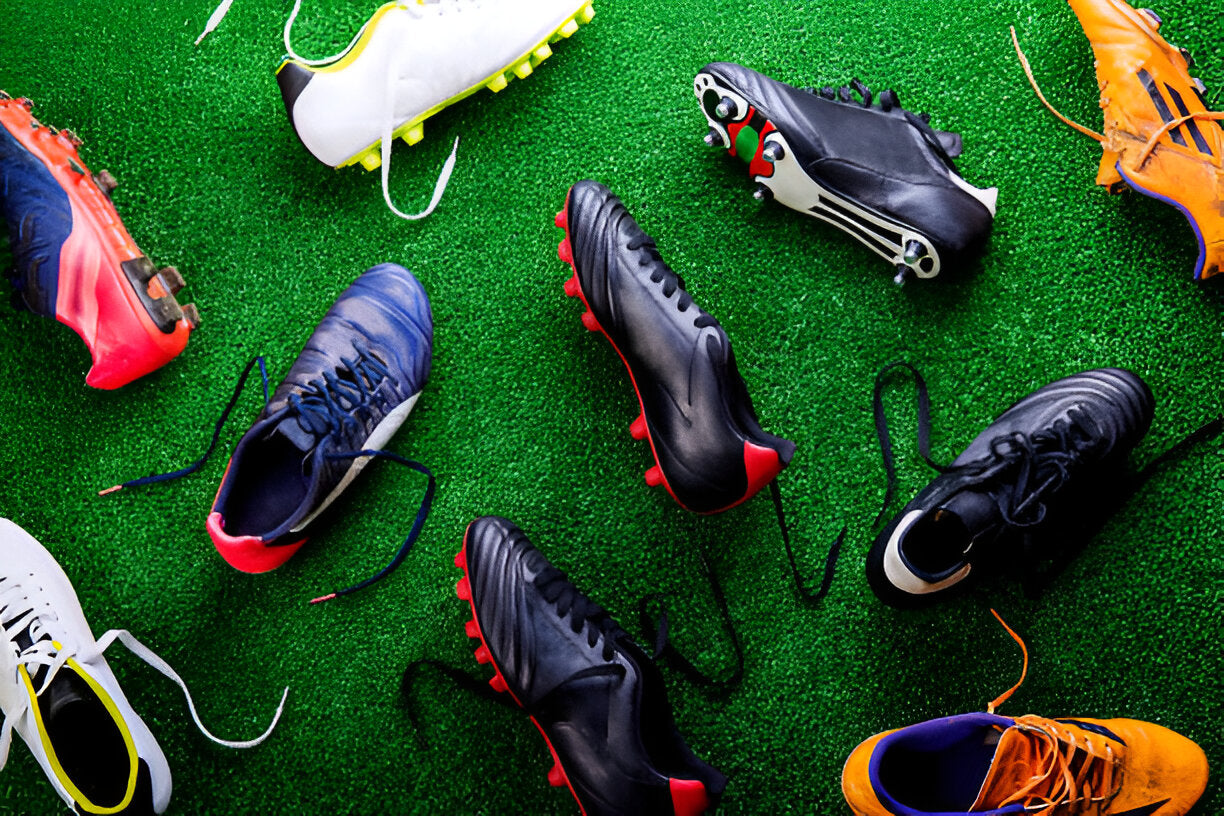Soccer is a versatile sport that can be played on various surfaces, from indoor courts to artificial turf and natural grass. Given the differences in playing conditions, players need proper footwear to ensure optimal performance and reduce the risk of injury. The most common footwear categories are indoor soccer and turf shoes, each designed to cater to specific surfaces and playing environments. Understanding the differences between these two types of soccer shoes is essential for performance and safety.
Indoor Soccer Shoes vs. Turf Shoes: An Overview
The fundamental difference between indoor soccer shoes and turf shoes is their design, particularly the sole. Indoor soccer shoes feature a flat, non-marking rubber sole, ideal for polished surfaces like gym floors. In contrast, turf shoes have raised nubs or ridges on the sole, providing enhanced traction on artificial turf surfaces. These variations in sole design directly affect performance, comfort, and safety on different surfaces.
While the two types of shoes may look similar, they serve distinct purposes. Wearing the wrong shoe for the wrong surface can compromise performance and increase the likelihood of injury. Let's explore the characteristics that set indoor soccer and turf shoes apart.
Key Features of Indoor Soccer Shoes
Indoor soccer shoes, often called futsal, are crafted explicitly for fast-paced indoor games. They come with several features that make them suitable for smooth and hard surfaces:
- Non-marking sole: Indoor shoes' flat rubber soles ensure they don't leave marks on gym floors, an essential feature for maintaining indoor courts' integrity. The sole also provides excellent grip for quick pivots and sprints.
- Lightweight design: Indoor shoes are generally made from lightweight synthetic materials, allowing players to move swiftly. The upper part is thin, enhancing the feel of the ball and giving players more control over their movements and passes.
- Cushioning: Given the hard surfaces of indoor courts, these shoes often come with additional cushioning, particularly in the insole, to absorb shock and reduce strain on the player's feet during prolonged matches.
- Flexibility: Indoor shoes are designed for agility, allowing players to make sharp cuts, turns, and accelerations without losing balance. The flat sole ensures smooth transitions during quick movements, which is crucial for the fast-paced nature of indoor soccer.
However, while indoor soccer shoes are excellent for gym floors, they do not perform well on turf or grass surfaces. Their flat soles don't provide the necessary grip, leading to potential slips and falls.
Key Features of Turf Shoes
Turf shoes are specifically designed for playing on artificial turf, a surface that mimics grass but can be much firmer and more abrasive. Turf shoes have their own set of unique features:
- Raised nubs or ridges: The sole of turf shoes is characterized by small, raised nubs or ridges that provide traction on artificial turf. These nubs are spaced evenly to ensure the player doesn't slip, offering excellent grip during sprints, pivots, and lateral movements.
- Durability: Turf surfaces can be harsh on shoes, so turf shoes are often made from more durable materials. The upper may feature additional reinforcements or padding to withstand the abrasiveness of the turf, making them last longer than typical indoor shoes.
- Thicker outsole: The sole of turf shoes is denser than that of indoor shoes, providing more cushioning and protection against the firm surface of artificial turf. Adding thickness helps absorb impact and reduces stress on the feet and joints.
- Comfort for prolonged use: Playing on turf can lead to swelling in the feet over time, so turf shoes are often designed with extra room or cushioning to accommodate this. This ensures that players remain comfortable even during extended games or training sessions.
While turf shoes are great for artificial grass, they should not be used on indoor surfaces. The raised nubs on the sole can damage indoor floors and reduce the player's ability to move swiftly, potentially leading to injuries.
Choosing the Right Shoe
Choosing between indoor soccer shoes and turf shoes comes down to understanding the surface you'll be playing on and how each type of shoe performs. Wearing the correct shoes offers several advantages:
- Enhanced performance: The right shoe provides better grip, agility, and ball control on the appropriate surface. For example, indoor shoes allow for quicker, sharper turns on smooth courts, while turf shoes offer better stability on artificial grass.
- Reduced risk of injury: Wearing the wrong shoe can increase the risk of slips, falls, and joint strain. Indoor shoes lack the traction needed for turf, and turf shoes can be too slippery for polished indoor courts, leading to a higher likelihood of injury.
- Longevity of the shoes: Using the wrong shoe on the wrong surface will wear out the shoe faster. Indoor shoes used on turf will quickly lose their grip, while turf shoes used indoors may experience faster wear on their nubs.
FAQs About Indoor Soccer Shoes and Turf Shoes
- Can you wear indoor soccer shoes on the turf? While it is technically possible to wear indoor soccer shoes on turf, it is not recommended. The flat soles of indoor shoes do not provide the necessary traction for turf surfaces, increasing the risk of slipping and injury. Moreover, using indoor shoes on turf will cause the sole to wear down much faster, leading to a shorter lifespan for your boots.
- Can you wear turf shoes indoors? Turf shoes should not be worn indoors. The raised nubs and ridges on turf shoes can damage indoor court surfaces and don't provide the quick responsiveness needed for indoor play. Additionally, turf shoes tend to be heavier, slowing you down in the fast-paced indoor environment.
- What kind of shoes do you wear for indoor soccer? For indoor soccer, it's best to wear futsal or indoor soccer shoes specifically designed for smooth, polished surfaces. These shoes feature non-marking rubber soles that provide excellent grip without damaging the court.
Finding the Right Fit
Indoor soccer and turf shoes are tailored to specific playing environments, and choosing the right one can make a big difference in your game. Indoor soccer shoes excel on smooth, hard surfaces, providing agility and ball control, while turf shoes offer traction and durability for artificial grass. Wearing the correct shoe not only enhances your performance but also reduces the risk of injury and prolongs the lifespan of your shoes.
If you enjoy soccer on multiple surfaces, it's worth investing in both types of shoes to ensure you're always equipped for the field you're playing on. After all, having the right gear is crucial for staying safe, performing well, and enjoying the game to the fullest.
Conclusion
The world of soccer shoes may seem complex initially, but understanding the differences between indoor and turf shoes is vital for players who want to excel on any surface. Whether playing on a polished indoor court or an artificial turf field, wearing the right soccer cleats will improve your game and help prevent injuries. So, lace up with the right pair and take your game to the next level!



